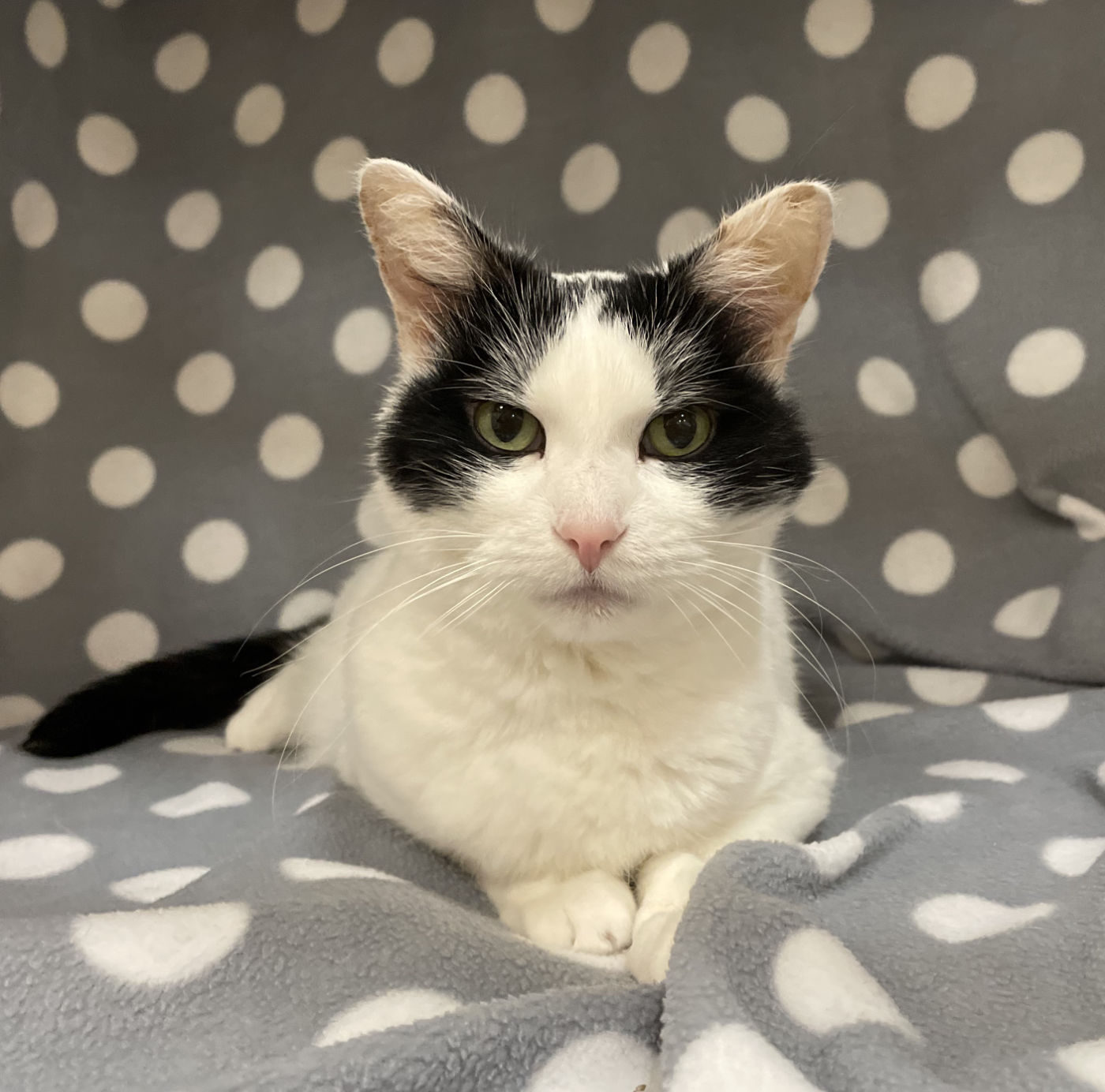Cats have a reputation for being mysterious, don’t they. Memes on social media are full of inscrutable cats planning scary things. Vets will tell you that cats are masters at hiding pain.
They have sound biological reasons for this. Cats are both predator and prey when out in the big world, and instinctively know they need to keep a low profile. If a cat by himself in the wild started wagging his tail or bouncing around like his doggie friends, he could become a target for harm.
That’s why cats are such subtle communicators. Your cats’ messages are there. You just have to learn to read them.

Like most of us, cats have their personal space bubbles. We humans are constantly invading their bubbles, wanting to pet them and pick them up. We call the edge of that bubble the Line of Consent.
When you go over your cat’s Line of Consent, you may trigger her to withdraw. She might pull in her body, her ears may start to flatten and her whiskers may tuck back to the sides of her head. These behaviors may be microscopic, but if you look closely, you’ll see them.

The better you get at seeing small changes in your cat’s body language, the better your communication with her will be. If you miss those cues or misread them, she may move to more fearful behaviors, like making herself smaller by pulling away completely or running away to hide.
Going over the line with some cats can force them to use their claws or teeth to defend from something they perceive as a threat. Remember, humans are one of cats’ main predators, so that informs all their interactions with us.
A cat who’s been repeatedly forced into situations she feels uncomfortable with can become frozen in place, without the spark of curiosity that makes our cat friends so interesting. She may close her eyes and appear sleepy or very quiet.
Many of the cats on social media in human-like positions, especially if forced into clothing, are cats who have given up, knowing they don’t have a choice with this huge predator they live with.

Another cue that your cat may be uncomfortable can be found in her eyes. A cat who is relaxed and open to your interaction will have soft eyes with normal pupils. Her whiskers and ears will be relaxed or a little forward. She will often give you a slow blink, which is an invitation for more contact.

That’s how she would communicate with another cat. If a cat stares straight at another cat, it is often a signal that an attack is about to follow. That’s why staring at cats can make them fearful.
If her eyes are squinty, or open wider than normal with dilated pupils, she could be fearful about whatever you’re doing. If you look closely, some cats even have worry lines above their eyes that show up as a curved shape in their upper eyelid.

These subtle cues can be even more challenging to read in a black cat, but they are there. Some cats’ faces have lowered brow lines that can make their eyes look angry, especially when combined with flattened ears, when in fact they are just scared. Cat responses to humans going over a cat’s line of consent are usually based in fear, not anger.

Assigning a human emotion like anger or spite only discounts the fear that cats can feel living with us humans, getting us off track from the need to figure out what the cat is feeling..
Watching you cat’s Line of Consent can help understand her body language. If you take the time to learn what her eyes, ears and whiskers look like when she’s relaxed and happy, you’ll be able to spot even the smallest changes when she’s trying to tell you something.

 Sara Ferguson is the Director of Happy Cats Haven, a feline rescue and adoption center in Manitou Springs, Colorado.
Sara Ferguson is the Director of Happy Cats Haven, a feline rescue and adoption center in Manitou Springs, Colorado.




